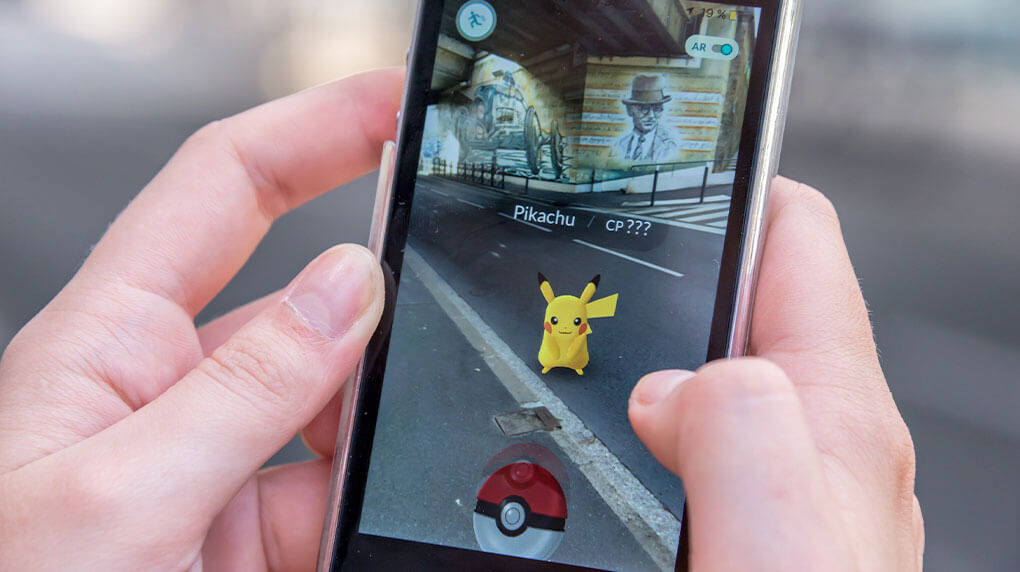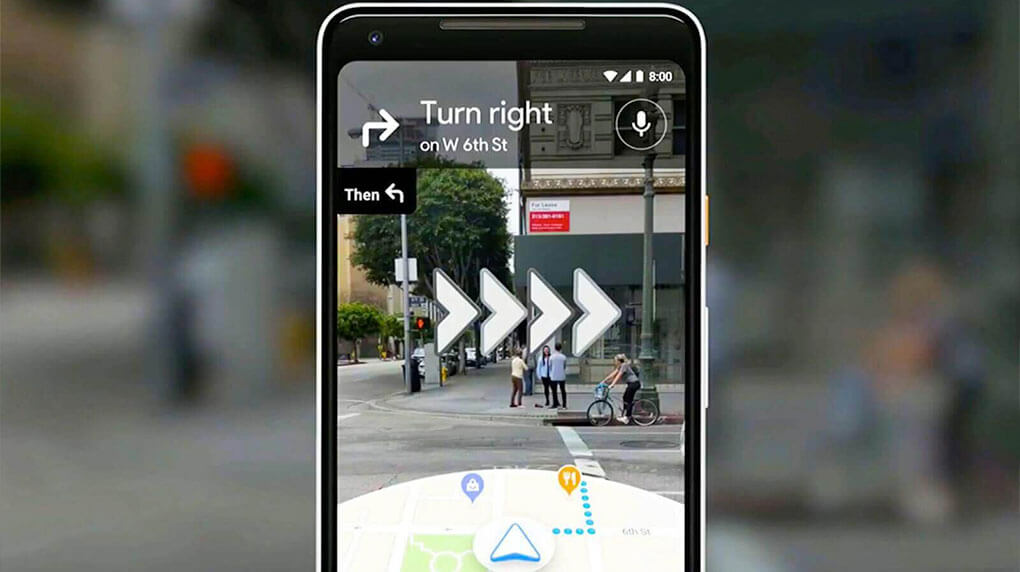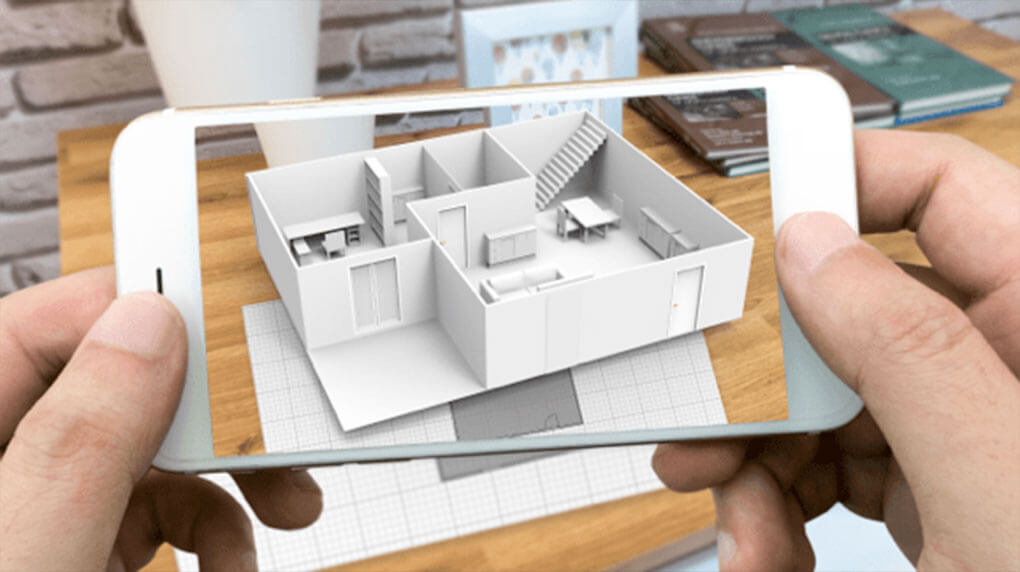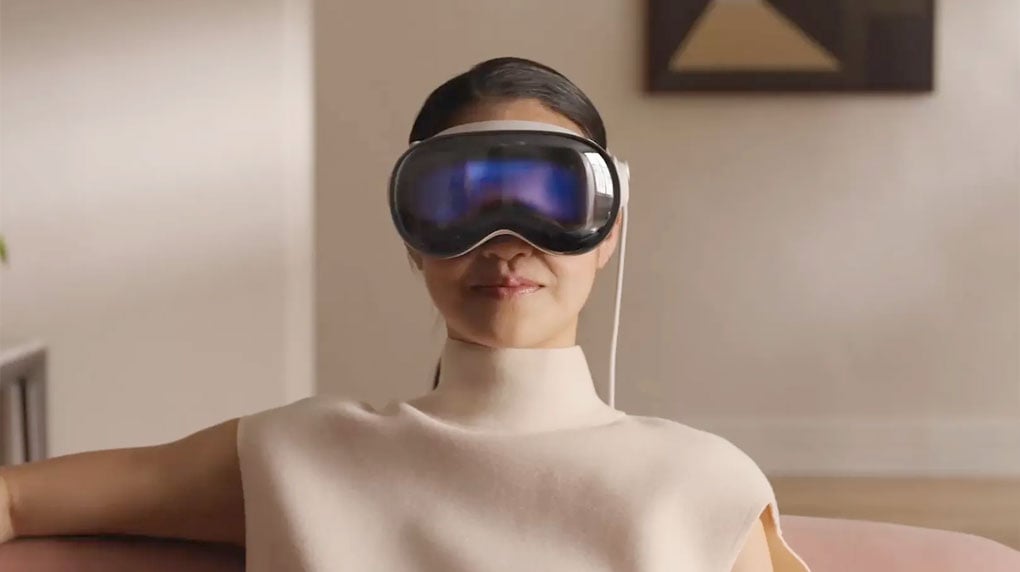Augmented reality is going to continue to change how we work, play, shop, and live. It’s transforming the world around us, blurring the line between real and imagined, whether you realize it or not.
Look to past tech — smartphones and 4G — to see how drastically the future can change.
Technological innovations and social climates often shape consumer behavior. With 5G aiding augmented reality (AR) capabilities, remote working still proving popular globally, and the rise of the metaverse - there is an ongoing market-wide shift in the way audiences engage with advertising. Marketers and brands can prepare for these shifts by staying informed and ahead of the curve.
Augmented reality in a nutshell
You might have used Augmented Reality (AR) without even realizing it. AR, as described by Darren Maher, Major Tom’s Creative Director, is essentially combining computer-generated objects with a real-world scene and blending them together as one.

Remember Pokémon GO? It’s been downloaded over a billion times and is a prime example of how Augmented Reality can be used as a powerful tool for brands. Players walked 8.7 billion kilometers when it was released in 2017 — enough steps to get us to the end of the solar system. Pokémon GO essentially mobilized over a billion people. There are few things in this world that are that motivating enough to get a billion people walking, especially something created by a brand.
The takeaway? With AR, the end of the solar system — not the sky — is the limit.
Convergence of 5G and AR
Technological convergence is the theory that separate and unrelated technologies, like the telephone and the computer for example, over time become closely integrated and even unified. This theory can be further extrapolated when thought of in broad terms unlimited by physical form. Right now, we are witnessing two pieces of technology, 5G and AR, peaking. If history has taught us anything, it’s that technology — especially in terms of convergence — can shape the world.
A little bit of history
Industries collapsed and rose on the bones of 4G. Uber hit the streets with the ability for users to track cars and update locations in real-time and is now a name ubiquitous with the ride-sharing industry. Uber’s been a massive disruption to the taxi industry that would not have been possible before. In the music streaming and on-demand media industry, Spotify came whistling in from Sweden, decimating the need for mp3 players and iPods. We could go on with examples of changed industries, but you get the idea. 4G enabled the smartphone revolution and laid a technological foundation that changed the world. 5G will do the same.
The takeaway
The takeaway is that industries adapt to changing market dynamics. With 5G, download speeds will skyrocket to more than 10 times what we’ve seen before. Imagine being able to download the entire Game of Thrones (or Keeping up with the Kardashians, or Star Trek, or whatever you’re into) series while you’re waiting in line to board a plane. And that’s just the tip of the iceberg.
Why should marketers care?
Simply put, with 5G is important to marketers because of, in part, its convergence with AR.

You can think of it in terms of what 4G did for video streaming, which in turn took its place as the crown jewel in digital marketing’s toolbelt. 4G’s data capabilities enabled video sharing on social media, which is one of the most powerful ways of communicating and engaging online. Video makes up roughly half of mobile data traffic and you just have to look to TikTok or Instagram Story filters to see how wildly successful interactive video with AR is. Now, 5G will continue to increase the limits of what AR is capable of.
Interactive advertising through AR
With 5G’s low levels of latency, AR is now able to reach the masses. Before, AR was reserved for 90’s sci-fi movies, tech conferences, and video game conventions. It was a thing of mystery, a concept that existed before the technology necessary to make it accessible. Something that sprung from the imagination of movie directors, writers, and artists. But, as you well know, art often precedes innovation.
Now, techs caught up. With the convergence of 5G and AR capabilities, AR exists in your pocket. Rising in popularity and becoming more accessible than ever, with the likes of Facebook's AR ads, AR is fast approaching status as table stakes for all brands and marketers. Now is the time to research, explore your options, and capitalize on this trend.
Retailers and AR
It’s easy to understand how retailers, for example, stand to benefit from AR. It enables companies to widen their sales funnel by improving online retail experiences — which can be isolating for consumers who prefer in-store shopping. Retailers can create 3D representations of their products, placing them inside their audiences’ homes, letting them see how the product will function in real life, and how it will look inside their space. For fashion retailers, virtual try-ons are now a reality. B2B marketers should also look to these B2C examples for inspiration.
First, we will mainly see AR in the form of entertainment because of its novelty, Darren tells us. But eventually, it will become the norm — sharing functionality is just the beginning.
Metrics gained
More than the obvious entertaining and interactive elements of using AR, it can also improve your metrics gained. You can create interactive experiences, publish it as an ad containing a CTA directing audiences back to your website or encouraging them on the path to purchase. Often, you’ll see an increase on link clicks and video duration.
Darren reminds us that advances in technology follow exponential growth, meaning that changes in tech come about faster and with greater leaps as time passes. The returns, like cost-effectiveness, also increase exponentially. This means that, as a marketer or owner of a business, you stand to benefit from tech’s advances.
Real estate and remote installations also stand to benefit from AR. For those showing houses or even homes before they’re developed, an AR rendering can place potential buyers inside the space. Realtors can also use AR to stage homes, catering the design to differing demographics. Imagine being able to see the same room set up as a home office, nursery, or guest bed just by swiping through options.

Installation and manufacturing will also be changed irrevocably. Imagine being able to hold your phone up to your car’s engine and watch the steps necessary to install a piece of equipment. You can become your own mechanic simply by downloading an app.
Let’s not forget about restaurants, either. You’ll be able to pull up a virtual menu and swipe through 3D renderings of dishes in front of you on your table. With AR, the opportunities seem endless.
Opportunity beyond industry
Darren reminds us that the opportunity for AR to help humankind stretches beyond marketing and remote installation. Glasses with AR capabilities, for example, have the power to help those with disabilities. If someone is blind, a pair of AR-enabled glasses can help guide you down the street, telling you if there are objects in your way and whether or not you are going in the right direction. The app can see for you. With 5G, AR glasses will be able to quickly read the information in real-time, translate it, and transfer the data necessary, immediately.
Another prediction Darren has made is that AR may help to make phones obsolete. Phones take your hands away — hands that have helped define humankind for centuries, without opposable thumbs, we would never have opened so many doors. With a phone in hand, we’re confined without that resource. The next step will likely give us our hands back.

Working from home may contribute to ARs digital advertising success
In 2020 we all witnessed how technology can shape our social and professional realities.
Telecommunication technologies have advanced so far that, when COVID-19 hit and we went into a global lockdown, for many, working from home was not only possible but also necessary. Now, companies know that working from home does not negatively impact productivity and has the added benefit of saving on operating costs. With the global shift towards a permanent remote workforce, internet usage has, understandably, increased. People who are working from home are communicating in online spaces.
April Yau’s webinar on Tourism and Hospitality discusses trends that can be applied to other industries, like empathetic messaging, the simple fact that people are still ‘dreaming’ about the future, and the desire for entertainment. That, coupled with internet traffic surging with increased remote work, makes for an ideal climate for interactive advertising. People are already increasingly in the space and often looking for something that can serve them there, whether that’s through an entertaining ad or an ad custom-built to provide a service, like showing how your living room might look with a new couch in it.
The takeaway
AR adoption will continue to rise due to the increased need for technology that can service the remote workforce.
“In terms of AR, don’t get left behind. We can create whole new experiences using this technology, we don’t know the limits of this tech yet, but we know the opportunity is great. For any company that considers themselves to be innovative, this is the realm that you need to be playing in. Get in on the ground floor.” – Darren Maher, Creative Director
Custom-built AR
With interactive advertising, along with all other advertising, a one-size-fits-all approach is doomed for failure. AR can be an incredible tool when it comes to your brand. However, along with every other aspect of your branded content, it should be cohesive and authentic.
If you’re curious about how AR can work for your brand, feel free to reach out.